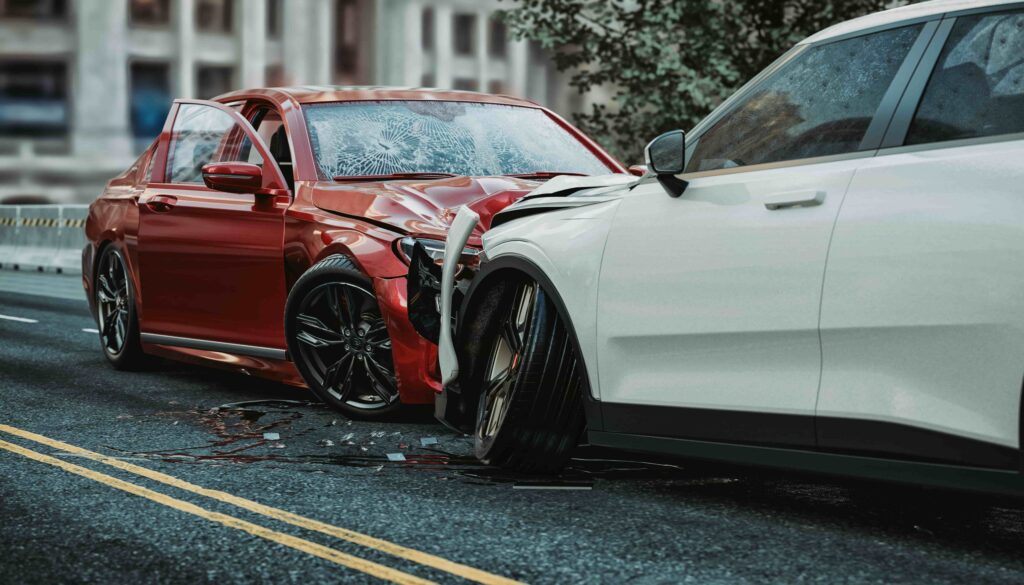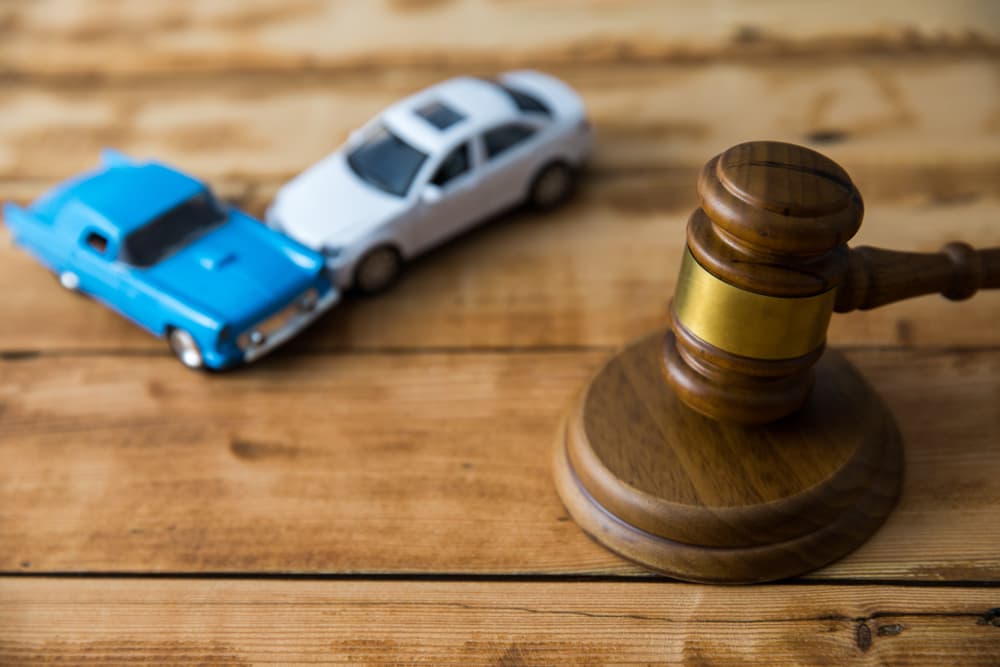The seconds after an impact on a busy Long Island road are a blur of confusion and adrenaline. But once the immediate crisis passes, a crippling question often takes hold: “What if I was partly to blame?”
Across New York, many accident victims mistakenly believe that sharing even a small amount of fault disqualifies them from seeking justice. The reality, however, is that state law provides a clear path forward.
If you are wondering, can I still sue if I was partially at fault, the answer in New York is a definitive yes, a fact that surprises many who are struggling with the financial and physical aftermath of an unexpected injury.
Schedule A Free Case Consultation
New York’s Approach to Shared Responsibility
When an accident occurs, determining who is at fault is rarely a simple, black and white issue. Often, multiple factors contribute to the incident. New York State operates under a legal principle called “pure comparative negligence.” This is a victim-friendly standard that allows you to seek compensation from other at-fault parties, even if you were partially responsible for the accident. Your percentage of fault does not prevent you from filing a claim; instead, it reduces the amount of compensation you can recover.
This differs significantly from the harsh rules in a handful of other states, where being even one percent at fault can completely bar you from recovering any damages. New York’s system acknowledges that accidents can be complex and that an injured person should not be left with a mountain of bills just because they made a minor misstep. A variety of everyday situations can lead to a finding of shared fault.
- A driver traveling five miles per hour over the speed limit is hit by someone who runs a stop sign.
- A pedestrian is struck in a crosswalk by a distracted driver, but the pedestrian was also looking down at their phone.
- A shopper in a Nassau County grocery store slips and falls on a wet floor, but they were not looking where they were going at the time.
These examples illustrate how blame can be divided. Under New York’s pure comparative negligence rule, all of these injured individuals would still have a right to pursue a claim for their damages.
How Is Fault Actually Determined?

The percentage of fault assigned to each party is not a random number or a gut feeling. It is a conclusion reached after a careful review of all available evidence. Insurance companies for the other parties will conduct their own investigation with one primary goal: to shift as much of the blame onto you as possible to minimize their payout. This is why gathering and preserving evidence is so critical to protecting your rights.
The evidence used to reconstruct the accident and assign liability can come from many different sources. A strong case is built by piecing together a clear picture of what happened. An independent investigation can often uncover details that were initially overlooked, painting a very different picture of liability than the one an insurance adjuster might suggest.
- Police Accident Reports: While not always admissible in court, the responding officer’s report contains initial observations, vehicle positions, witness information, and sometimes a preliminary assessment of what happened.
- Statements from Witnesses: Independent third parties who saw the accident can provide unbiased accounts that are incredibly valuable in confirming your version of events.
- Surveillance Camera and Dashcam Footage: Visual evidence is powerful. Footage from a nearby business or a vehicle’s dashcam, can definitively show who had the right of way.
- Scene and Vehicle Evidence: The location and severity of damage to vehicles, the length of skid marks, and the final resting place of the cars all tell a story that accident reconstructionists can interpret.
- Cell Phone Records: In cases involving distracted driving, phone records can sometimes show whether a driver was texting, talking, or using an app at the moment of impact.
Having a comprehensive collection of evidence is fundamental to challenging an insurance company’s attempt to place an unfair amount of fault on you.
How Partial Fault Affects Your Financial Recovery
The most direct impact of a comparative fault finding is on your final settlement or award. The calculation is straightforward: your total damages are reduced by your percentage of fault. For example, if it is determined that your damages from medical bills, lost income, and pain and suffering total $200,000, but you were found to be 25 percent at fault, your recoverable amount would be reduced by 25 percent, or $50,000. This would result in a final recovery of $150,000.
This mathematical reduction highlights why contesting the percentage of fault is so important. A difference of 10 or 20 percent can translate into tens of thousands of dollars. Even with a reduction, you can still seek compensation for the full range of losses you have suffered due to someone else’s negligence.
- All related medical treatment, from the initial emergency room visit to ongoing physical therapy and future surgeries.
- Wages you lost while unable to work and compensation for any reduction in your future earning ability.
- The physical pain and emotional distress you have endured as a result of your injuries.
- Damage to your vehicle or other personal property.
Securing fair compensation means fighting not only to prove the other party’s negligence but also to minimize any percentage of fault that might be assigned to you.
What to Do After an Accident if You Think You Share Blame

When you are back home after an accident, feeling sore and overwhelmed, it is natural to replay the events in your mind. This is a vulnerable time, and the actions you take can have a significant impact on your ability to file a successful claim. It is crucial to be mindful of your words and actions. Never admit fault to anyone, not to the other driver, not to witnesses, and especially not to an insurance adjuster. Let the evidence speak for itself.
Focus on taking practical steps that will help document your situation and protect your rights as you move forward. Your priority is your health and well-being, but these actions are also vital for any future legal claim.
- Preserve All Evidence: Do not repair your car until authorized by the carriers and until you have thoroughly documented the damage to your vehicle. It is also best to speak with an attorney as soon as possible. Additionally, do not throw away the damaged clothing or footwear from a slip and fall. Take photos of your injuries as they heal, as this documents their severity over time. Keep all receipts for accident-related expenses.
- Follow All Medical Advice: It is critically important to see a doctor for any injuries and to follow their prescribed treatment plan. This creates an official medical record connecting your injuries to the accident and shows you are taking your recovery seriously.
- Be Wary of Insurance Adjusters: You will likely receive a call from the other party’s insurance company very quickly. The adjuster may seem friendly, but their job is to protect their company’s bottom line. You are not obligated to give them a recorded statement. It is often best to decline to speak with them until you have had an opportunity to understand your rights.
Taking these measured steps can help you avoid common mistakes that people make in the confusing days and weeks following an accident.
The Clock is Ticking: Why Time Limits Matter
In any personal injury claim, you are working against a deadline. This deadline is known as the statute of limitations, and it sets a firm time limit on your right to file a lawsuit. If you miss this deadline, you may lose your right to seek compensation forever, no matter how strong your case is. These time limits can be confusing and vary depending on the circumstances of your accident.
It is absolutely critical to be aware of the specific deadline that applies to your situation, as some are surprisingly short. An assumption that you have plenty of time can be a devastating mistake.
- Three Years for General Personal Injury: For most accidents, such as a car crash or a slip and fall, you generally have three years from the date of the incident to file a lawsuit in New York.
- Two Years for Wrongful Death: If you have tragically lost a loved one due to someone else’s negligence, the statute of limitations for filing a wrongful death claim is two years from the date of death.
- 90 Days for Claims Against a Municipality: This is a very important and often missed deadline. If your injury was caused by a government entity, such as being hit by a Town of Islip vehicle or tripping on a broken public sidewalk, you must file a formal Notice of Claim within just 90 days of the incident.
These deadlines are strict, and understanding which one applies to your case is one of the most important first steps in the legal process.
FAQ for Can I Still Sue if I Was Partially at Fault?
Here are answers to some common questions individuals have after an accident where fault is unclear.
What if the other driver’s insurance company says the accident was entirely my fault?
It is standard practice for an at-fault driver’s insurance adjuster to try to place 100 percent of the blame on you. This is a negotiating tactic designed to discourage you from pursuing a claim. Their determination is not the final word. A legal claim can be built on evidence that contradicts the insurer’s position and establishes a more accurate distribution of fault.
Does New York’s “no-fault” insurance affect my ability to sue if I was partially at fault?
New York’s no-fault system is designed to cover your initial medical bills and lost wages through your own car insurance policy, regardless of who was at fault. However, if your injuries are considered “serious” under the legal definition, you can step outside the no-fault system and file a lawsuit against the at-fault driver for damages like pain and suffering. Being partially at fault does not prevent you from taking this step, though it will still reduce your final award based on your percentage of fault.
Can my own words be used to establish partial fault?
Yes, absolutely. Anything you say at the scene of the accident, to the police, or especially in a recorded statement to an insurance adjuster can be used to argue that you admitted partial or total fault. Apologizing at the scene, even as a polite gesture, can be misinterpreted as an admission of guilt. This is why it is so important to stick to the facts and avoid speculating about or admitting fault.
If I receive a traffic ticket for the accident, does that automatically mean I am 100% at fault?
Receiving a traffic ticket does not automatically make you 100 percent liable for the accident in a civil claim. While the ticket can be used as evidence against you, it is not definitive proof. For example, you may have been ticketed for speeding, but the other driver may have made a much more dangerous maneuver, such as running a red light, making them primarily responsible for the crash.
Charting Your Path Forward with Trusted Legal Support

Realizing that you might share some responsibility for an accident that left you injured can be disheartening. However, the most important thing to remember is that in New York, this does not close the door on your right to justice. The law of comparative negligence was designed specifically for these complex situations, ensuring that you can still hold other negligent parties accountable for the harm they caused. The key is to understand how your share of fault is determined and to build the strongest possible case to protect your right to fair compensation.
At Rosenberg & Gluck, LLP, our team of lawyers focuses on personal injury law for the Long Island community. With over a century of combined experience, we are prepared to use our resources and knowledge to advocate for you, whether at the negotiating table or in the courtroom. We can assist clients in both English and Spanish. If your life has been turned upside down by an accident, contact us today at (631) 451-7900 or through our online form for a free, no-obligation consultation to learn more about your options.